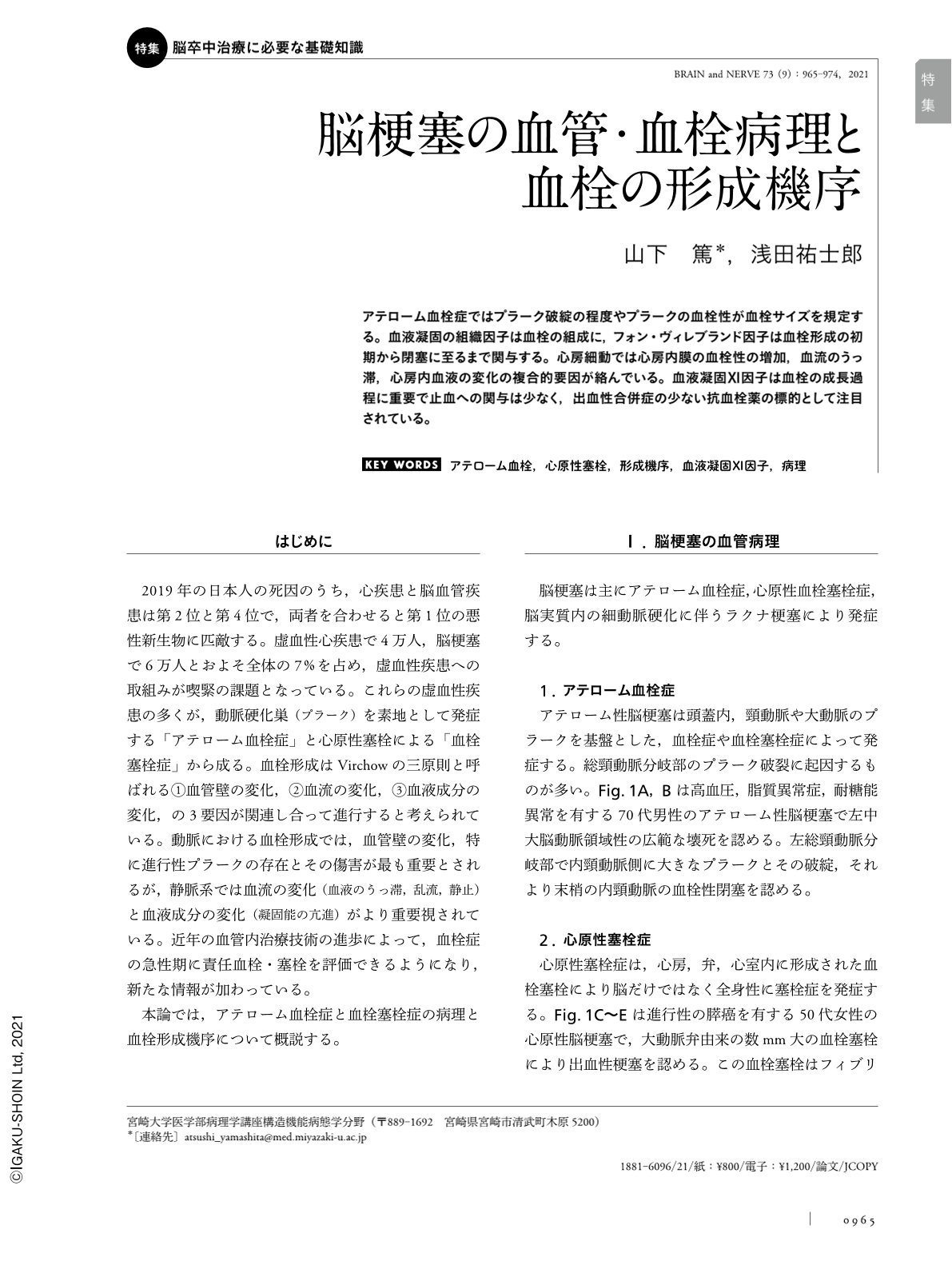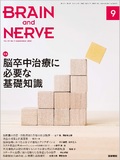Japanese
English
- 有料閲覧
- Abstract 文献概要
- 1ページ目 Look Inside
- 参考文献 Reference
アテローム血栓症ではプラーク破綻の程度やプラークの血栓性が血栓サイズを規定する。血液凝固の組織因子は血栓の組成に,フォン・ヴィレブランド因子は血栓形成の初期から閉塞に至るまで関与する。心房細動では心房内膜の血栓性の増加,血流のうっ滞,心房内血液の変化の複合的要因が絡んでいる。血液凝固Ⅺ因子は血栓の成長過程に重要で止血への関与は少なく,出血性合併症の少ない抗血栓薬の標的として注目されている。
Abstract
The mechanisms underlying atherothrombus and cardiac thrombus formation are complex and multifactorial. Ischemic stroke is characterized by large thrombus formation and vascular occlusion. The degree of plaque disruption and plaque thrombogenicity determine the size of the atherothrombus. Tissue factor-driven thrombin generation contributes to fibrin formation and platelet aggregation. As opposed to collagen, the von Willebrand factor (VWF) and fibrin may provide the scaffolds required for initial platelet adhesion on ruptured plaques. VWF also contributes to occlusive thrombus formation, following plaque disruption. Acute changes in shear stress and oscillatory shear stress can induce superficial erosive injury of plaques and thrombus formation. Atrial fibrillation causes atrial intimal thickening and thrombogenic factor expression, promotes stasis of blood in the left atrium and the left atrial appendage, and can contribute to thrombogenesis and elevated plasma VWF and fibrinogen levels. Coagulation Factor XI is a target for next-generation anticoagulants because it plays an important role in thrombus growth but not in hemostasis.

Copyright © 2021, Igaku-Shoin Ltd. All rights reserved.


